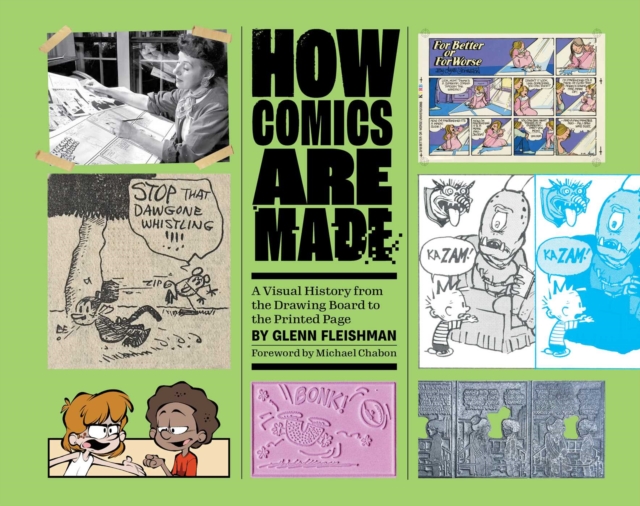How Comics Are Made: A Visual History from the Drawing Board to the Printed Page

How Comics Are Made: A Visual History from the Drawing Board to the Printed Page
The book is divided by time and transitions, from the start of consistently appearing daily and weekly comics in newspapers:
- The Early Days: From the Yellow Kid in the 1890s to the 1910s
- Syndication in Metal: When it became affordable to make hundreds or thousands of copies of daily strips to send around the country (or world), from the 1910s to 1970s
- Flatland: Newspapers' switch from relief to flat printing and the shift to purely photographic transformations from the 1950s to the 1980s
- Pixel Perfect: The transition from photographic to digital, from scanning to digital creation, from the 1970s to 2000s and through the present day
- Webcomics and Beyond: Look, ma, no ink! Digital comics read online and sometimes put on press to make books
Each section will feature interviews with artists, reproductions of original cartoon art, printing and coloring artifacts, and the way cartoons appeared in print--or on screen.
PRP: 248.00 Lei
Acesta este Prețul Recomandat de Producător. Prețul de vânzare al produsului este afișat mai jos.
223.20Lei
223.20Lei
248.00 LeiLivrare in 2-4 saptamani
Descrierea produsului
The book is divided by time and transitions, from the start of consistently appearing daily and weekly comics in newspapers:
- The Early Days: From the Yellow Kid in the 1890s to the 1910s
- Syndication in Metal: When it became affordable to make hundreds or thousands of copies of daily strips to send around the country (or world), from the 1910s to 1970s
- Flatland: Newspapers' switch from relief to flat printing and the shift to purely photographic transformations from the 1950s to the 1980s
- Pixel Perfect: The transition from photographic to digital, from scanning to digital creation, from the 1970s to 2000s and through the present day
- Webcomics and Beyond: Look, ma, no ink! Digital comics read online and sometimes put on press to make books
Each section will feature interviews with artists, reproductions of original cartoon art, printing and coloring artifacts, and the way cartoons appeared in print--or on screen.
Detaliile produsului










